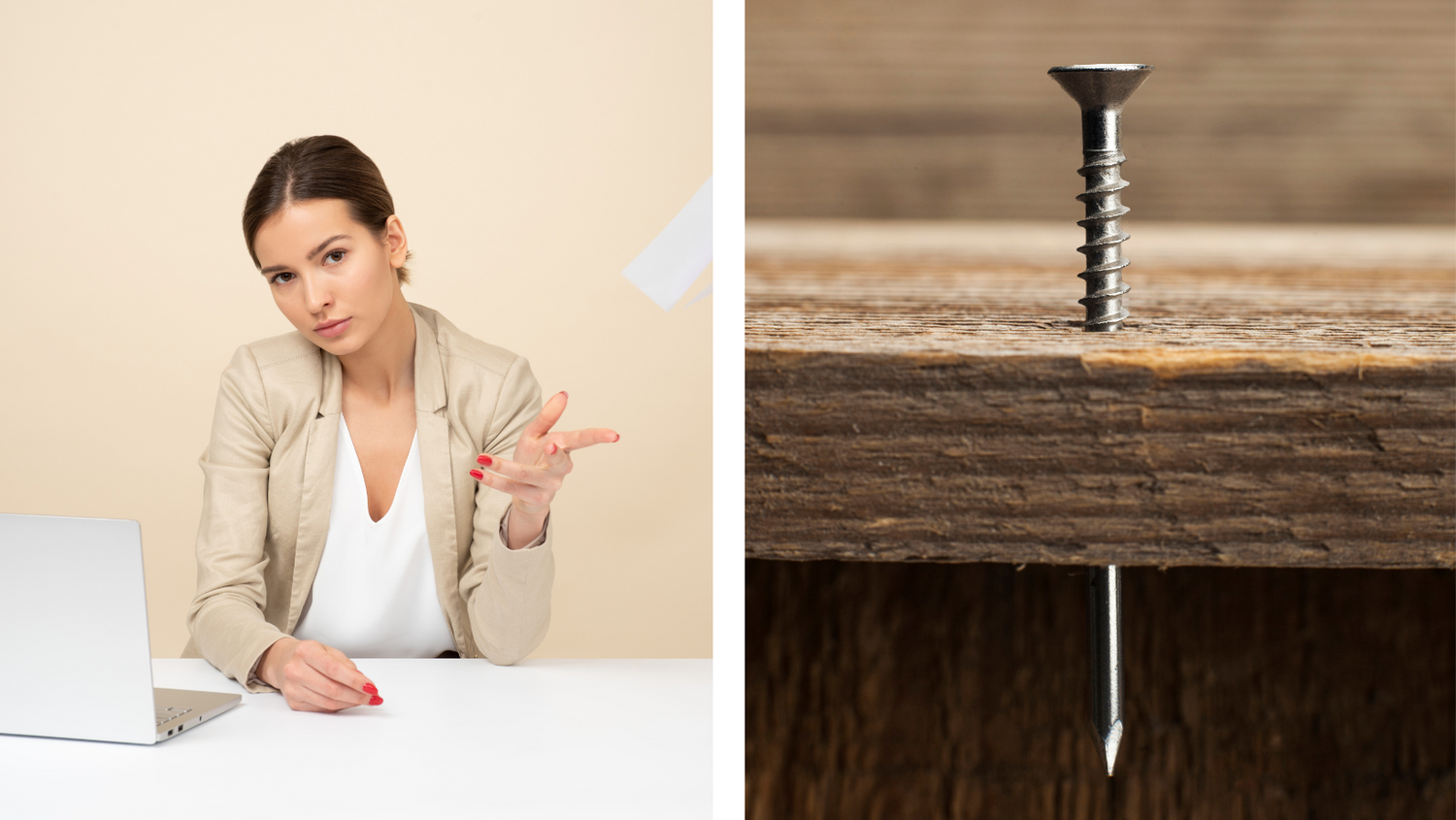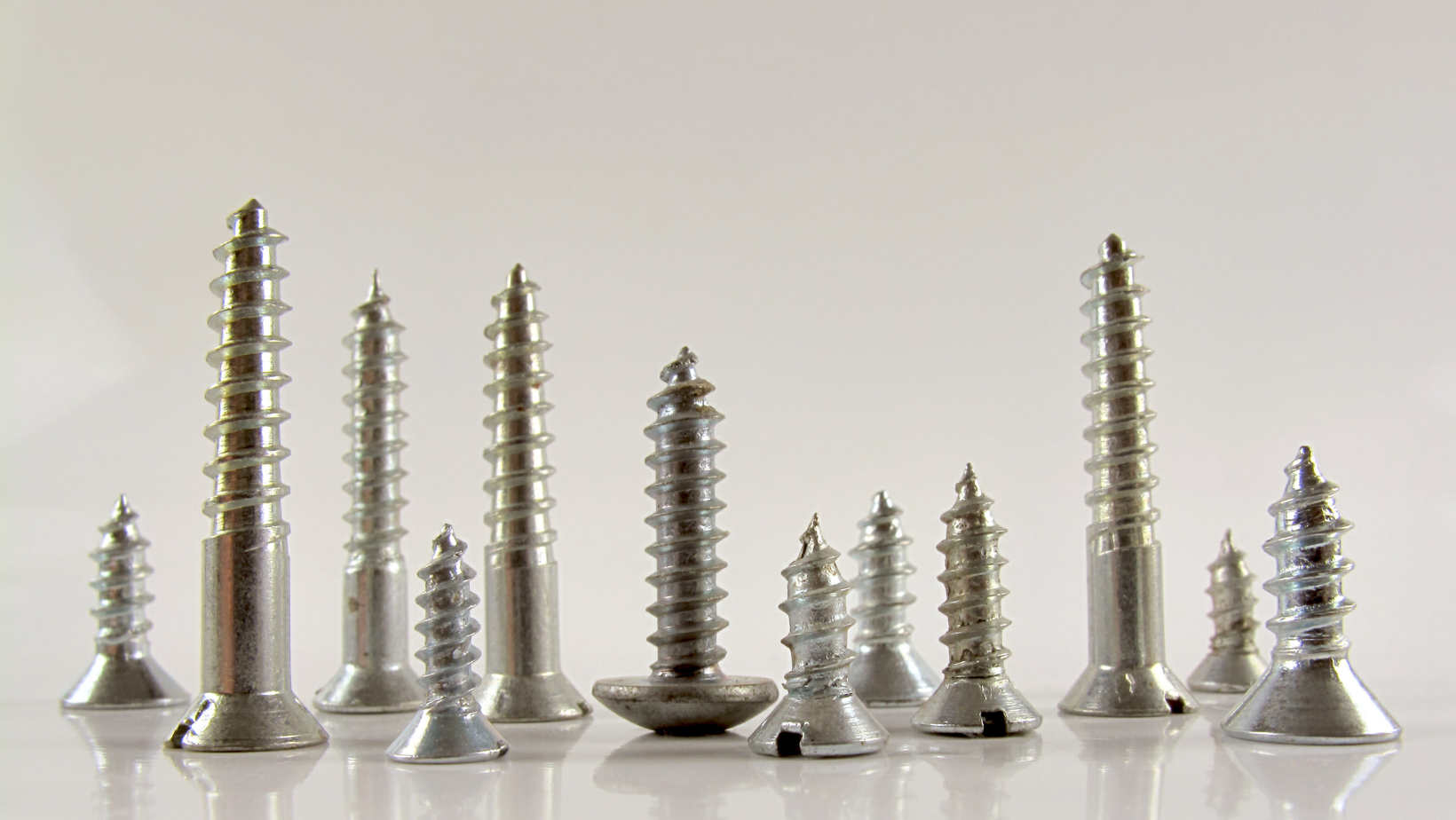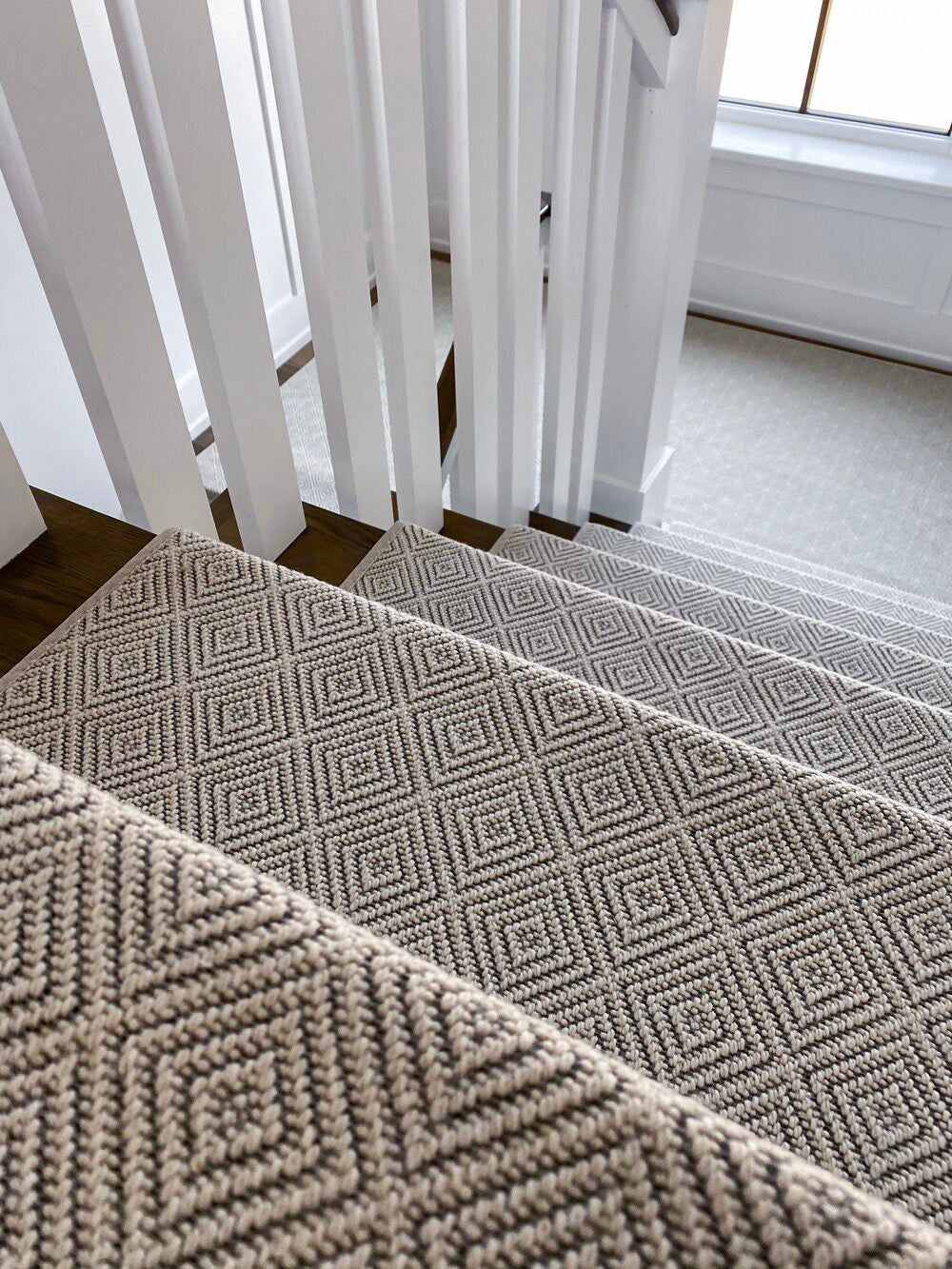When installing stair treads, a common question is, should you nail or screw stair treads?
The best choice depends on durability, maintenance, and installation ease.
Screws provide a stronger, more secure hold, making them ideal for high-traffic stairs and long-term stability. Nails, on the other hand, offer a quicker, more seamless finish, but they may loosen over time with frequent use.
Choosing the right fastening method impacts the safety, longevity, and future repairs of both wooden stair treads and carpet stair treads.
Proper installation ensures your stairs remain sturdy and functional while also accommodating any future refinishing or updates.
This guide will break down the pros and cons of each option, helping you make the best decision for your staircase.
Keep reading to learn which method fits your project and how to install stair treads for maximum stability.
Using Nails or Screws
Both nails and screws provide solid support, but screws generally offer better long-term stability.
They are also easier to remove if you need to replace or adjust the treads later.
Since staircases endure daily foot traffic, it’s essential to choose a fastening method that can withstand weight, impact, and shifting pressure.
Screws distribute force more evenly, helping to reduce the likelihood of squeaky steps or loose treads over time.
Nails, however, can be faster to install and less noticeable.
For cosmetic purposes, nails can create a smoother surface without the need for wood putty or screw covers, making them an aesthetic advantage for certain staircases.
Should You Nail Down Stair Treads?
Nailing stair treads is a common method that many homeowners and builders still use.
It’s been the go-to technique for decades because of its quick application and minimal material costs.
However, nails are more susceptible to loosening over time, especially in homes with heavy foot traffic or staircases that experience temperature and humidity changes.
Pros of Nailing Treads
-
Faster Installation: Nails drive in quickly, saving time on large projects. This makes them ideal for contractors and DIYers working on tight schedules.
-
Lower Cost: Nails are usually cheaper than screws. For those looking to reduce project expenses, nails can be a cost-effective option without sacrificing basic stability.
Cons of Nailing Treads
-
Less Durability: Nails can loosen over time, especially in high-traffic areas. This can result in squeaky stairs, causing frustration and the need for frequent maintenance.
-
More Maintenance: Loose nails may require hammering back in or replacing. Over time, constant hammering may weaken the wood, leading to cracks or structural issues in the tread.
Can You Screw in Stair Treads?
Many homeowners prefer screws over nails because of their durability and ease of removal.
Screws provide a tighter, more precise fastening than nails, preventing the gradual loosening that often occurs with nails used to attach stringers.
They also provide extra reinforcement, making them ideal for stairs that experience daily use, children running up and down, or heavy furniture being moved.
Pros of Screwing Treads
-
Stronger Hold: Screws create a tighter connection, keeping treads in place longer. They prevent the stair from shifting under weight, which helps maintain structural integrity.
-
Easy to Adjust: If a tread needs to be removed or replaced, screws make the process simple. This is particularly useful for remodeling projects, allowing homeowners to make changes without damaging the wood.
Can You Use a Brad Nailer for Stair Treads?
A brad nailer is not recommended for securing stair treads.
Brad nails are too small to handle the weight and pressure of daily foot traffic.
These types of nails are primarily used for trim work, paneling, and decorative moldings, where minimal weight-bearing is required.
They work well for light trim but aren’t strong enough for stair treads.
If used, they may cause the tread to shift over time, increasing the risk of cracks or loose steps.
For better results, use finishing nails, spiral nails, or screws instead.
What Kind of Nails to Use for Stair Treads?
If you decide to nail down your stair treads, choosing the right type of nail is important.
Different types of nails offer varying levels of grip and durability, affecting how well they hold up under foot traffic.
Best Nails for the Job
-
Finishing Nails: Ideal for wooden stair treads in homes with moderate foot traffic. They create a cleaner, more polished look without visible nail heads.
-
Spiral or Ring Shank Nails: Designed to grip the wood better, reducing the chance of loosening. These nails twist into the wood, providing better resistance against movement and preventing squeaky stairs.
For staircases with heavy foot traffic, spiral or ring shank nails provide better long-term hold.
They are especially useful in commercial buildings or multi-level homes where stairs endure constant use.
Tips for Installing Stair Treads for Long-Lasting Results
No matter whether you choose nails or screws, proper installation is key to a safe and durable staircase.
Here are a few tips to ensure your stair treads stay secure and look great:
-
Measure Twice, Cut Once: Ensure your treads are properly sized before installation to avoid gaps or misalignment.
-
Pre-drill Holes for Screws: If you’re using screws, pre-drill the holes to prevent the wood from splitting and ensure a smooth, secure fit.
-
Use Wood Adhesive: For added hold, apply a thin layer of wood adhesive to the tread before securing it, especially if you're using nails.
-
Check Alignment Regularly: As you go, make sure each tread is perfectly aligned to prevent uneven steps or squeaks over time.
Following these steps will help you get the most out of your stair tread installation, keeping them secure, stable, and stylish for years to come.
Do You Install Stair Treads or Risers First?
The order in which you install stair treads and risers can have a big impact on the final appearance and stability of your staircase.
Risers First, Then Treads
It’s generally best to install risers first, allowing the treads to overlap the top of them. This creates a cleaner, more secure finish and ensures your stairs look professional.
Installing the risers first also ensures that the treads fit snugly against them, preventing gaps that can trap dirt or cause uneven surfaces.
If you're working with carpet stair treads, this method will also help with a tight, smooth fit, avoiding any bulging or shifting that can make the carpet uneven.
By following this installation order, you ensure that both aesthetic and functionality are prioritized, giving you a staircase that’s not only beautiful but safe to use.
Conclusion
Whether you should nail or screw stair treads depends on your specific needs.
-
Use screws if you want long-term durability and easy adjustments. They are best for high-traffic areas and offer stronger reinforcement.
-
Use nails if you need a faster installation and a lower-cost option. They work well in low-traffic homes or when budget is a top priority.
For carpeted stair treads, it's especially important to choose a method that prevents bulging or shifting.
A secure installation will keep your stairs safe, quiet, and visually appealing for years to come.
Ready to Elevate Your Staircase? We’ve Got You Covered.
Choosing the right fastening method is just the first step in creating a beautiful, durable staircase.
At Oak Valley Designs, we specialize in premium carpet stair treads, landings, and hallway runners that bring both style and safety to your home.
Whether you’re looking for a soft, quiet step for your family or a bold design statement, we have options to match your needs.
Not sure where to start? We’re here to help.
Our team can guide you in selecting the perfect solution for your space, ensuring your staircase looks great and functions flawlessly.
-
Call us today at 706.331.0315
-
Email us at info@oakvalleydesigns.com
-
Visit us online: oakvalleydesigns.com
-
Stop by our showroom: 30 River Ct SW Bldg E, Cartersville, GA 30120
Let’s create a staircase that’s as comfortable, safe, and stylish as the rest of your home. Reach out today!



